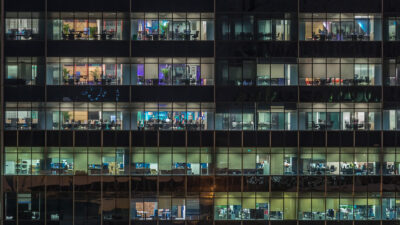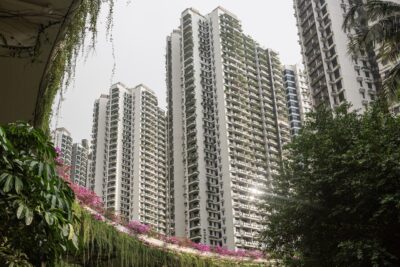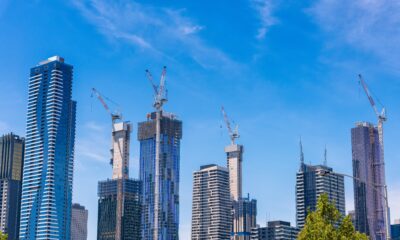Richard Meier on designing the hottest new luxury residences in Taipei
Perhaps sitting on Architectural Digest’s top 100 influencers list in 2016 was no big deal for Richard Meier. He is, after all, winner of the Pritzker Prize – architectures highest honour.
Meier joins fellow AD100 architects Jim Olson, Annabelle Selldorf, Steven Harris and Calvin Tsao for The Master Collection – Phoenix Property Investors’ luxury multi-architect project; a 28-villa development in the rolling hills outside Taipei.
Richard Meier & Partners have designed six stand alone houses, each taking advantage of the surrounding natural beauty, and featuring striking geometric contours and white walls typical of Meiers style.
We spoke to Meiers about working on The Master Collection, his unique asthetic principals and his design process…

What appealed to you about the Master Collection?
The Master Collection was remarkable for us not only for the natural beauty around the site, and the views overlooking the mountains in the Great Taipei area, but also for the commitment expressed by the client to create a sense of place with exceptional residences and a varied group of architects.
Architecture is not a validation of ideals, but rather a creative process allowing for new ideas to happen.
Our primary concern at every site is to create a strong sense of “place,” by enhancing or transforming the existing site in a unique and provocative way. Whether urban, suburban, or the open landscape, we search the context of each project individually for clues that inspire a formal idea about issues of organization, scale, and location that provoke a strong dialog with its setting. Each element of the master plan’s organization reflects an ambitious attention to detail and innovative use of construction solutions, and we hope the villas become a successful living environment that is unique to the neighborhood and Taiwan.
How do you feel your unique style compliments the hillside surroundings?
We have designed all the villas to read as a single object on the landscape, giving them a cubic appearance and connection to the site. The buildings are oriented to frame views and to modulate the use of natural light into the interior spaces. Stepped courtyards, gardens and terraces follow the existing slopes offering an array of views and outdoor spaces.
The villas are arranged on their respective lots following the idea of a promenade with a sequence of architectural elements composed of pedestrian bridges, suspended walls, and openings that traverse the site culminating in spectacular views of the surrounding mountains.
More: Here are 6 of the world’s most timeless landscape designs
What do you enjoy most about the design process?
The principles that guide the work in our office are rooted in timeless, classical design issues such as Context, Site, Order, and the use of Natural Light. In my work I seek to find through design the best of what exists and what can be.
My purpose is to deliver thoughtful, original modern architecture that is as accessible as it is beautiful, as humanist as it is disciplined. This is an architecture which is concerned with the individual as well as the community at large. My commitment to the art of architecture extends from the belief that architecture guided by the principles of purity, organization, and an understanding of each place’s uniqueness has the power to inspire, to elevate the spirit, to feed both the mind and body.
To what extent do you think culture and tradition are important in modern architecture, if at all?
Architecture is the careful articulation of a process that allows change to happen. Architecture is not a validation of ideals, but rather a creative process allowing for new ideas to happen.
Over the years there have been so many things that have been important to my work as an architect. We look at each project and consider the context—what it is and what it can be—beyond the strictly functional concerns. We think about its public nature and how that can be enhanced, how the spaces we create can enliven the experience of being there. As we develop our first projects in 11 countries one of the biggest challenges we’ve faced working in so many different places is understanding variations, both in terms of culture and tradition.
During the 1984 Pritzker Prize Acceptance Speech I explained that mine is a preoccupation with light and space; not abstract space, not scale-less space, but space whose order and definition are related to light, to human scale and to the culture of architecture.
Architecture is vital and enduring because it contains us; it describes space, space we move through, exit in and use. I work with volume and surface, manipulating forms in light, changes of scale and view, movement and stasis. In this way, one might say that my style is something that is born out of culture, and yet is profoundly connected with personal experience. But to gain any sense of my involvement, it is necessary to consult the work. Almost thirty years later, this design philosophy continues to inform the work.
Some rendered images of Meier’s designs for The Master Collection:






This was part of a five week series featuring exclusive interviews with The Master Collection architects. The other four architects are Jim Olson, Annabelle Selldorf, Steven Harris and Calvin Tsao. For more details of The Master Collection as well as an interview with Samuel Chu, founding partner of Phoenix Property Investors, go here.
Recommended
Meet the vagabond architect behind India’s housing scene
Vinu Daniel is helping to shake up India’s home building setting
Where Asian real estate stands in a fragmented, warmer world
Asia’s real estate industry faces many and varied challenges as external factors continue to bite
6 sights to see in Singapore’s Marine Parade
Handily located Marine Parade has emerged as a vibrant investment choice in the Lion City
There’s a township dedicated to health and wellness in Malaysia
Property seekers have their health needs catered for at KL Wellness City








